A recent post in Weeds of the Northwest asked how best to clear a 400 square-foot patch of vinca. The question struck a chord with me because of the hard lessons I have learned in Everett’s Forest Park about the hazard of overclearing. Yes, there are various methods used for clearing large areas of weeds, but until a sufficient density of desirable plants has become established, weeds will continue to come back, requiring vast hours of selective hand weeding. In this post, I lay out two options for fully restoring a 400 square-foot area overrun with weeds.
Option One: Clear All and Install Plants
If neither time nor money is a limiting factor, then clearing large areas and immediately making dense installations of plants will eventually produce excellent results.
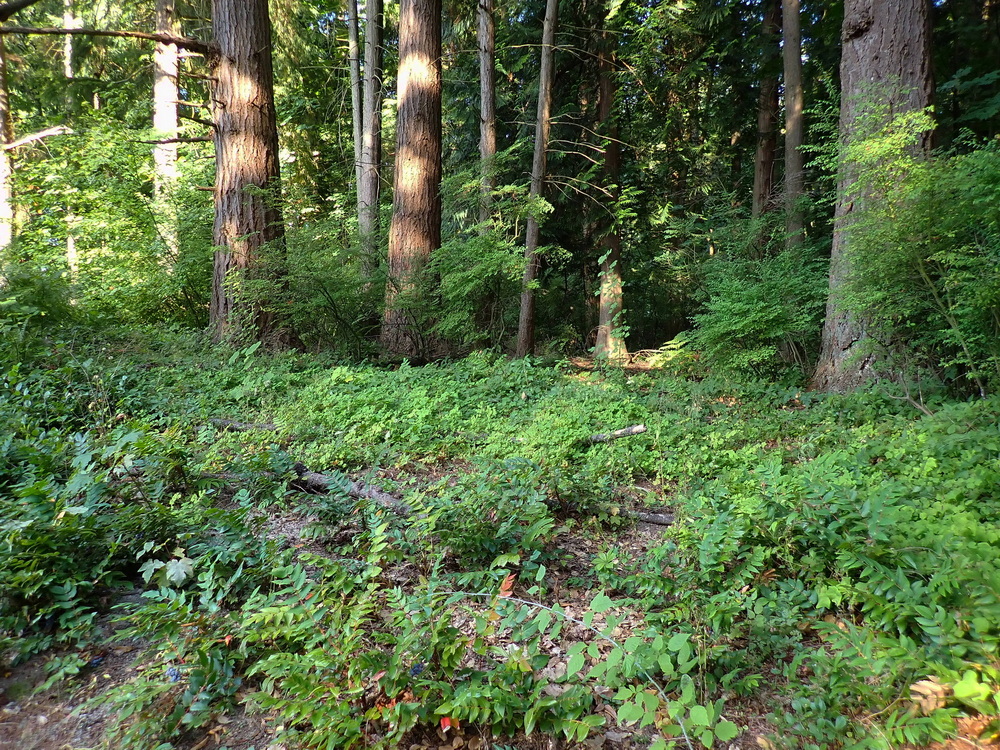
Option One: Estimated Labor Time for Follow-up Weeding
About 100 square feet per hour is my average rate for selective hand weeding (removing weeds by hand before they have gone to seed, while carefully preserving the desired plants). Planting areas often need to be weeded four or more times per year. Thus, it could take 16 hours each year to maintain the cleared area and 160 hours over ten years.
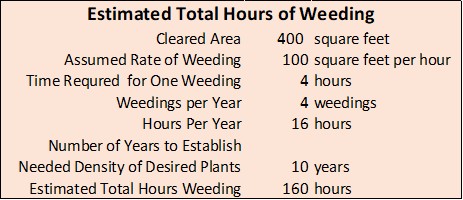
Option One: Estimated Installation Costs (Money and Time)
Good plants are expensive. Using the plant spacing recommended in the Forest Steward Field Guide produced by the Green Seattle Partnership (here page 55), I estimate that the cost of filling a hypothetical cleared area of 400 square feet with good-quality plants could be over $2500. (You may say I shouldn’t pay $10 for a plant, but I haven’t had good luck with less-expensive options.)
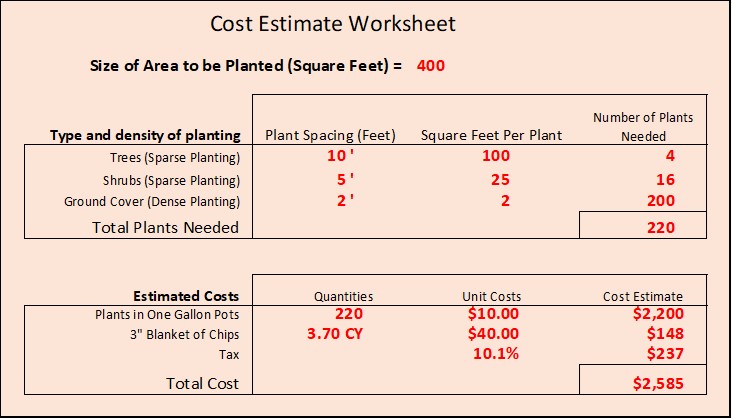
In addition to the costs of plants the investment of labor is significant. If it takes 10 minutes to properly install a plant, it could take 36 hours to plant 400 square feet.
Option Two: Gradual Restoration, Step-by-Step
If either time or money is a limiting factor, then a gradual approach can achieve similar results with less overall work and expense. The following conceptual plan uses some of the principles of the Bradley Method to gradually transform a 400 square-foot bad area covered in invasive plants into a good area filled with desirable plants.
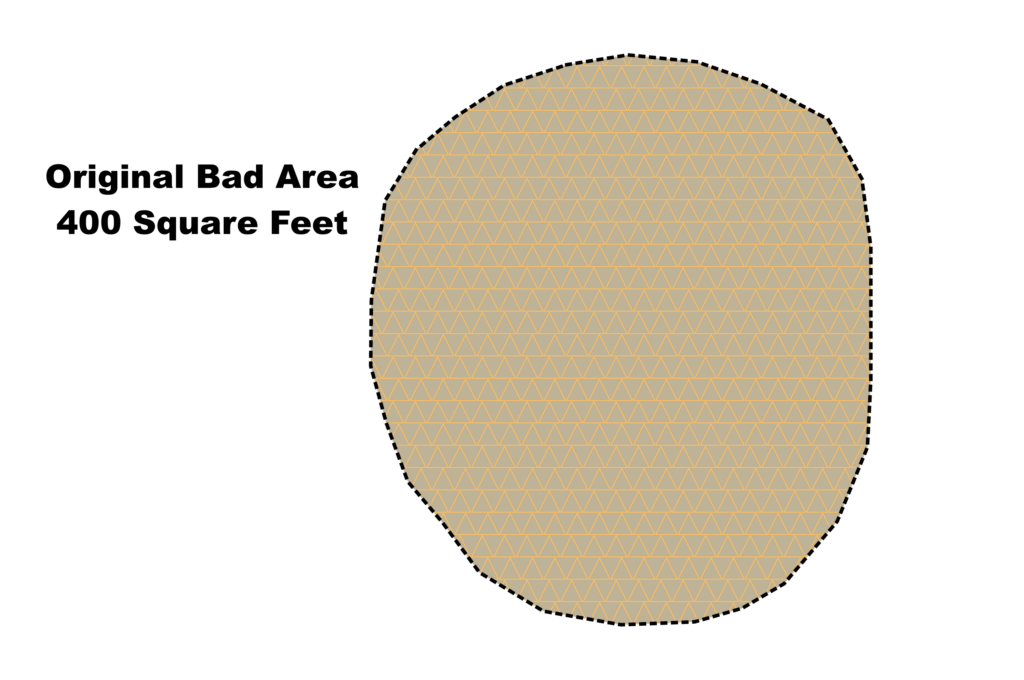
Step One
The first step would be clearing a weed break around the bad area about 2 feet wide. The area cleared would be about 135 square feet, taking less than 1.5 hours to weed (6 hours per year). The narrow width would allow a person to reach the entire area for weeding or planting while standing or kneeling in the bad area and trampling weeds instead of desirable plants.
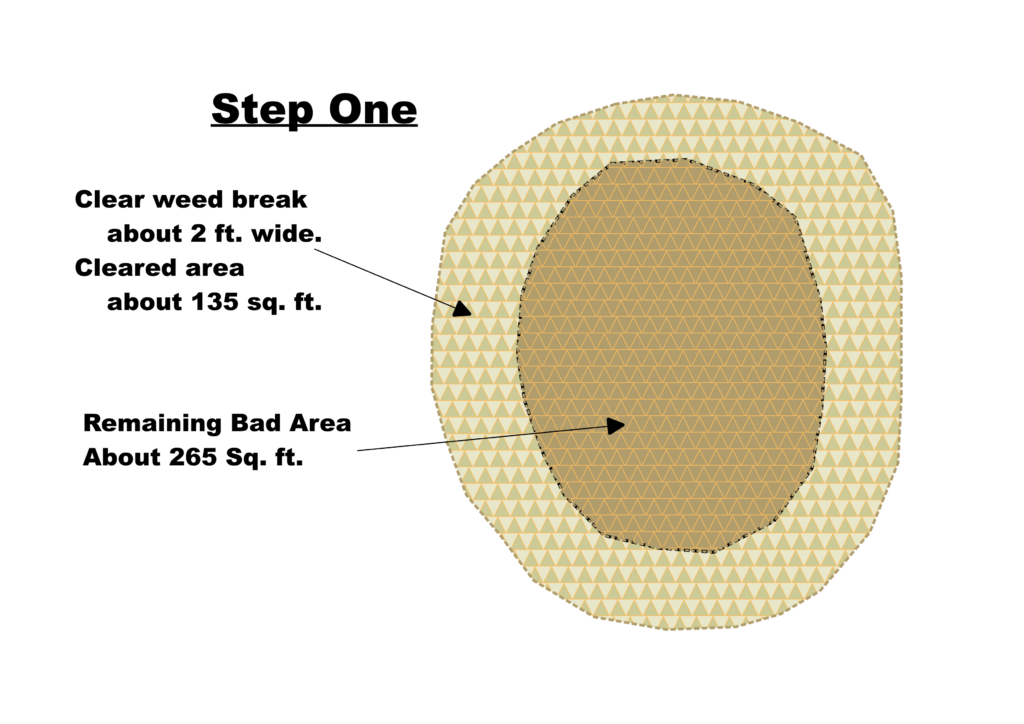
Step Two
Over the next 3 growing seasons, no new area would be cleared, the weed break would be maintained with selective hand weeding, and the focus would be on gradually filling it with desirable plants. This would be achieved with a combination of:
- natural regeneration of desirable plants,
- installation of transplanted rescue plants,
- installation of plants propagated on site including divisions, rhizome cuttings, live stakes, and seeds, and
- purchasing a few plants each year to add diversity.
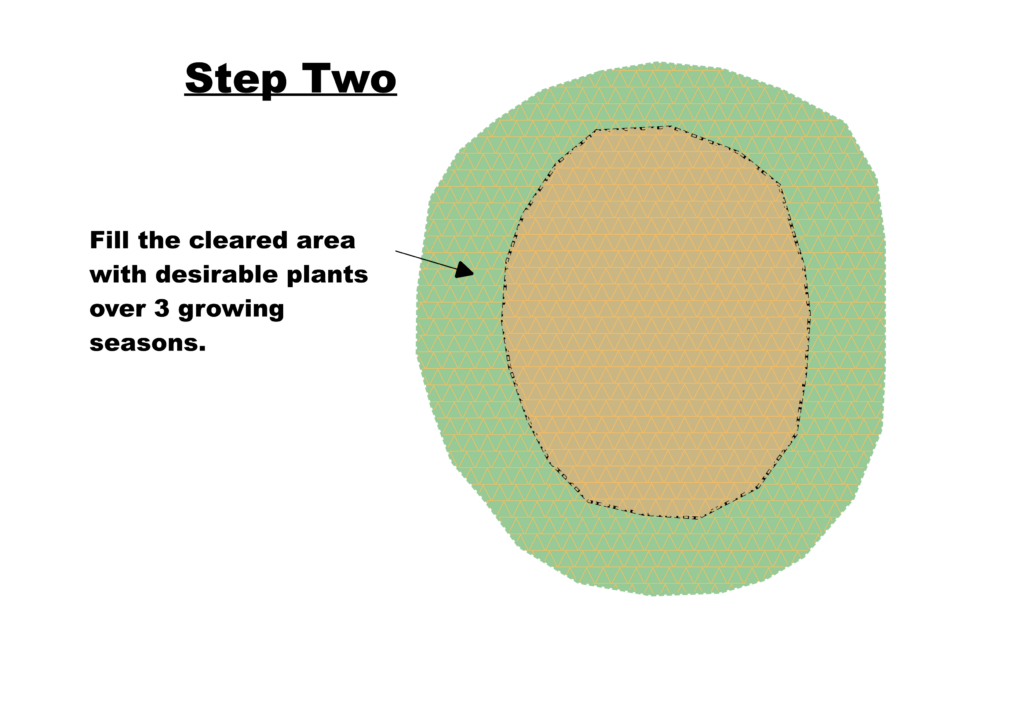
Step Three
In about three growing seasons, the plants would become sufficiently established to begin competing with weeds, and the next weed break would be cleared.
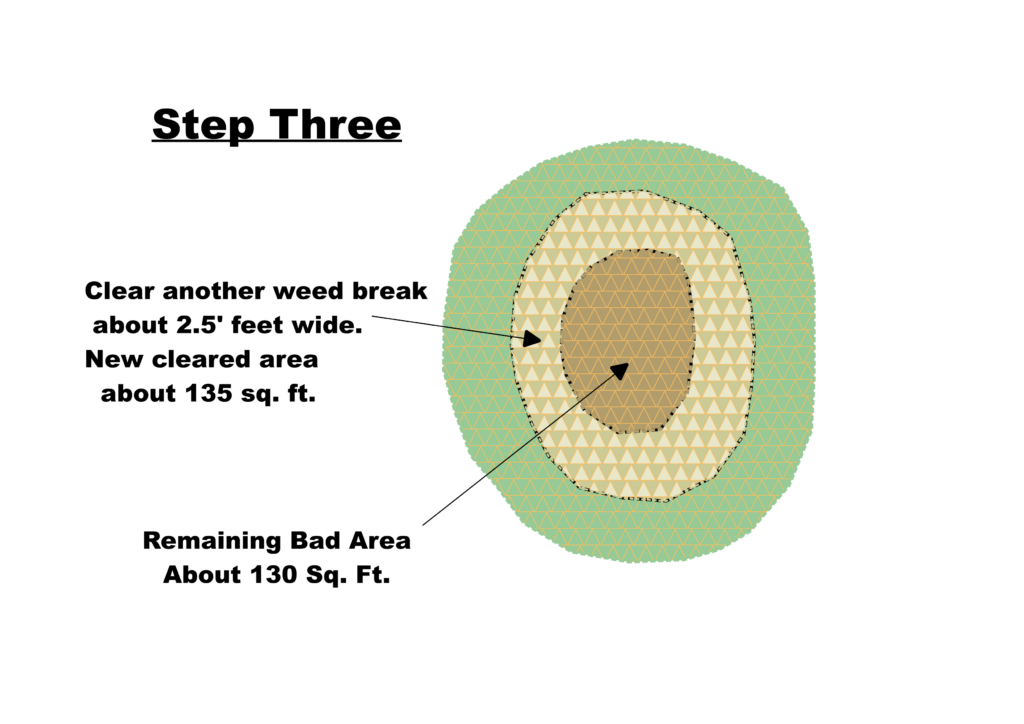
Step Four
Over the next 3 growing seasons, the second weed break would gradually be filled with desirable plants while continuing to maintain all of the cleared area.
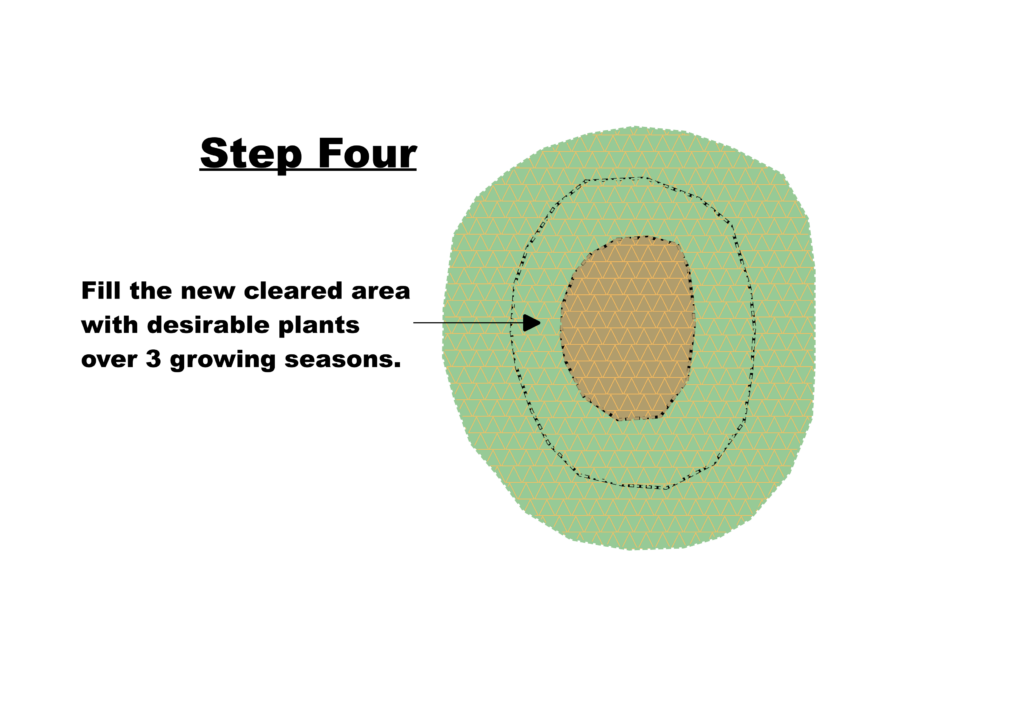
Step Five
After 6 growing seasons, the remaining 130 square feet of bad area would be cleared.
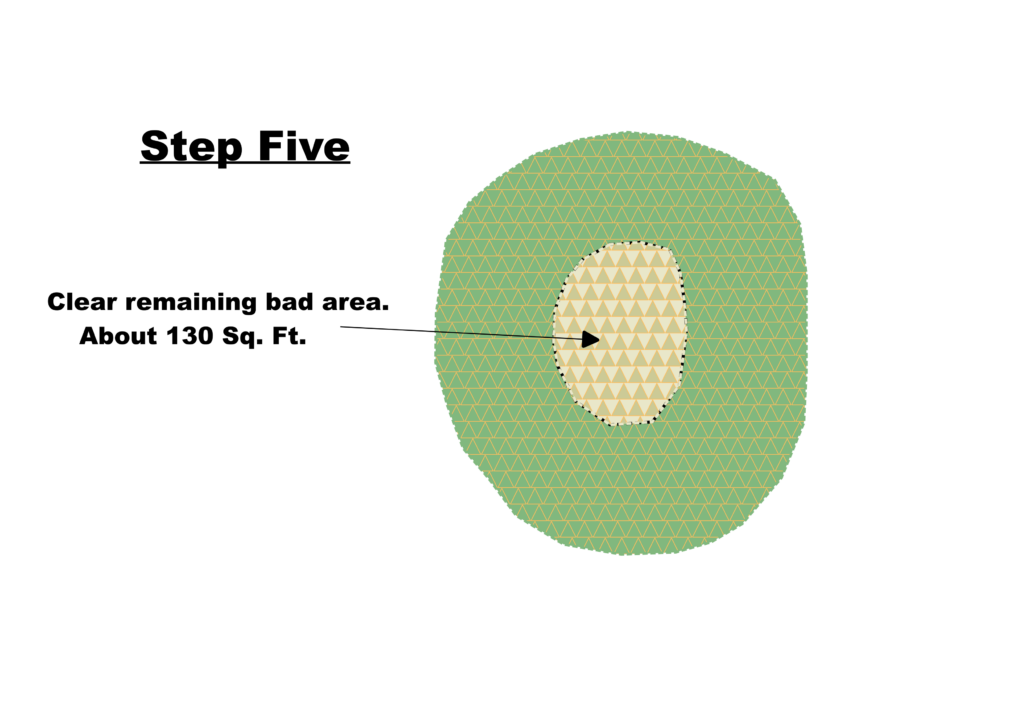
Step Six
Over the next three growing seasons, the remaining cleared area would be filled with desirable plants while continuing to maintain all 400 square feet.
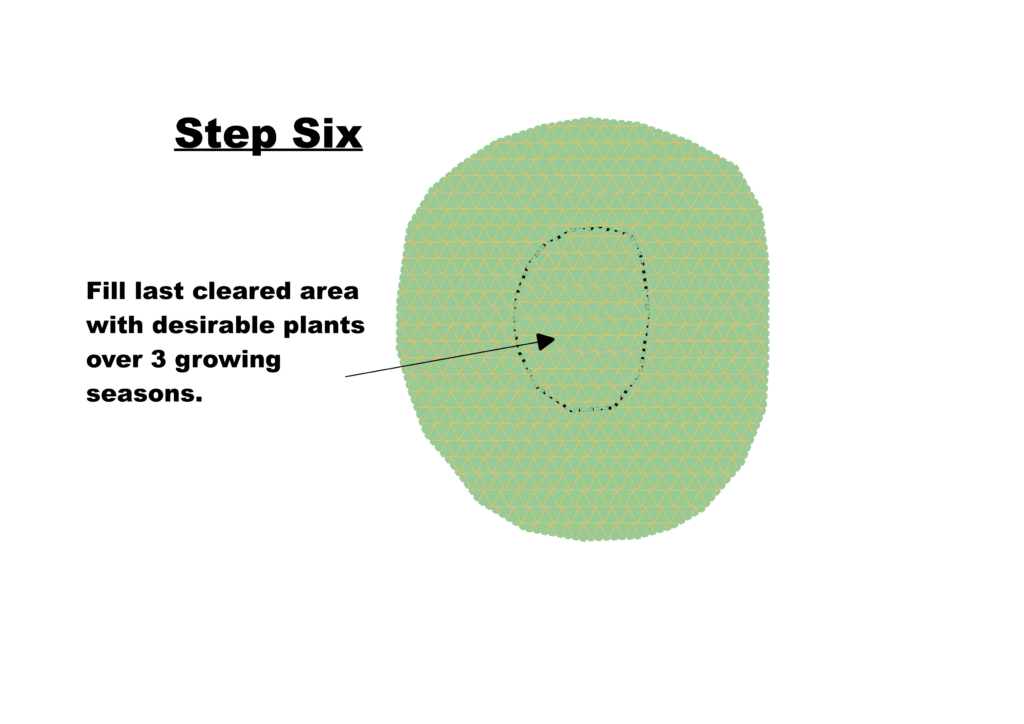
Ongoing
In subsequent years, occasional weeding would continue as part of routine maintenance.
Thus, as opposed to clearing the 400 square feet to begin with and spending a bundle on plants, the gradual method would:
- restore the area in measured steps,
- keep weeding time below 10 hours per year,
- reduce the need to purchase a large quantity of plants,
- spread out the costs of plants that are purchased, and
- spread out the time spent installing plants.
The Hazard of overclearing
One of the keys to the second option is avoiding overclearing. The co-creator of the Bradley Method, Joan Bradley, had the following to say about overclearing on page 21 of Bringing Back the Bush:
“Never, never, never overclear. At best, it involves you in a great deal of tiresome and unnecessary follow-up, and at worst it makes regeneration almost impossible. It shatters morale – nobody likes weeding the same piece of ground over and over with precious little to show for it.”